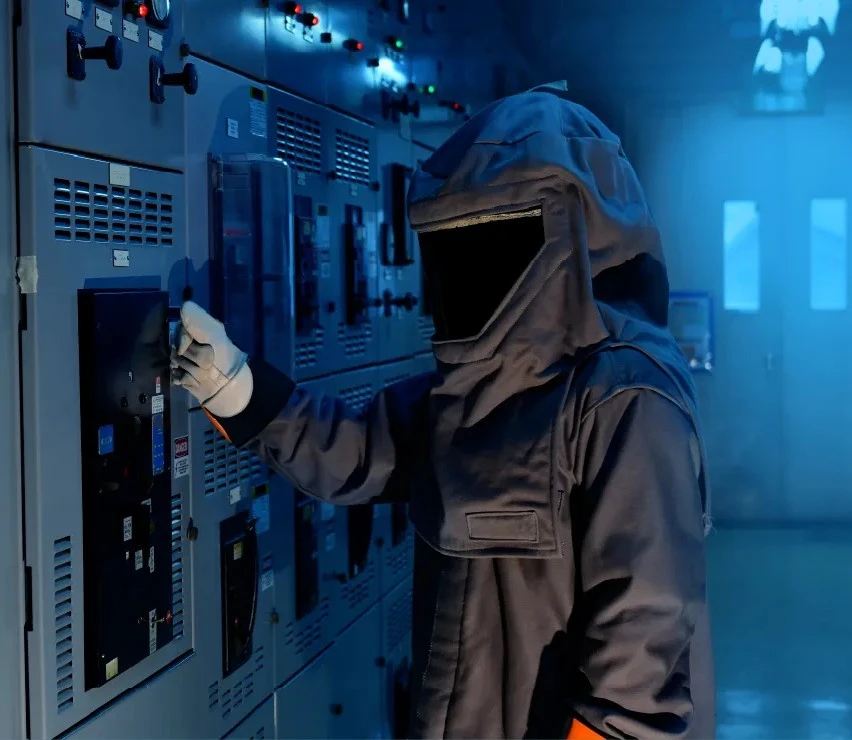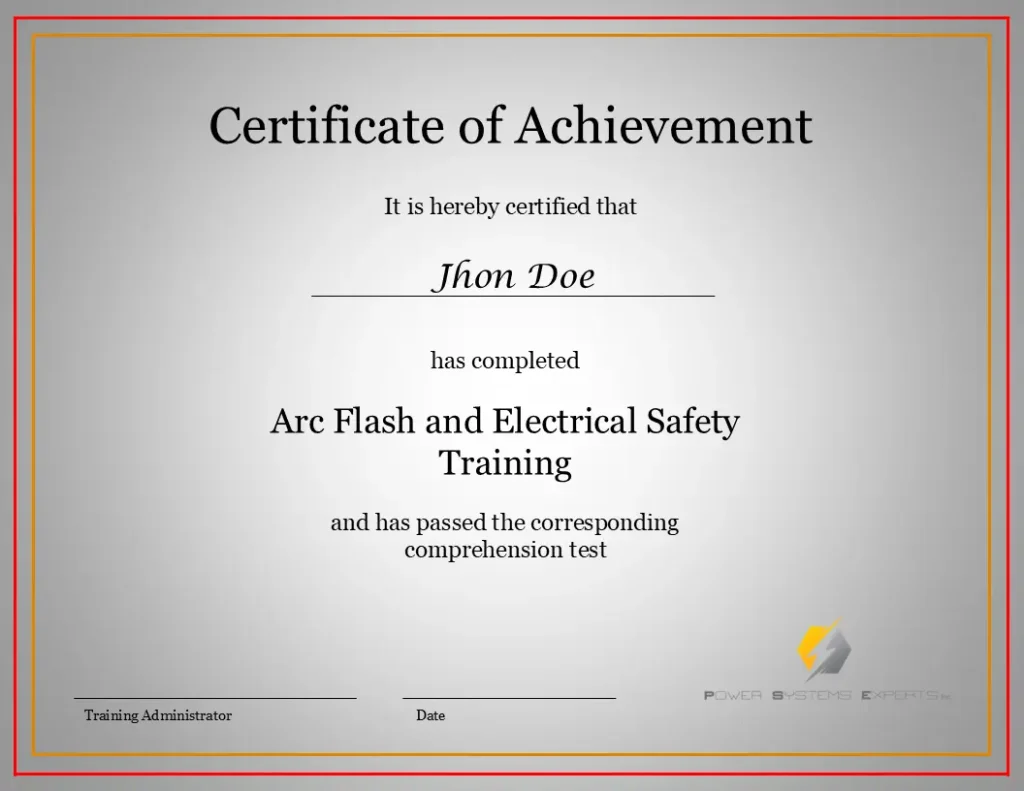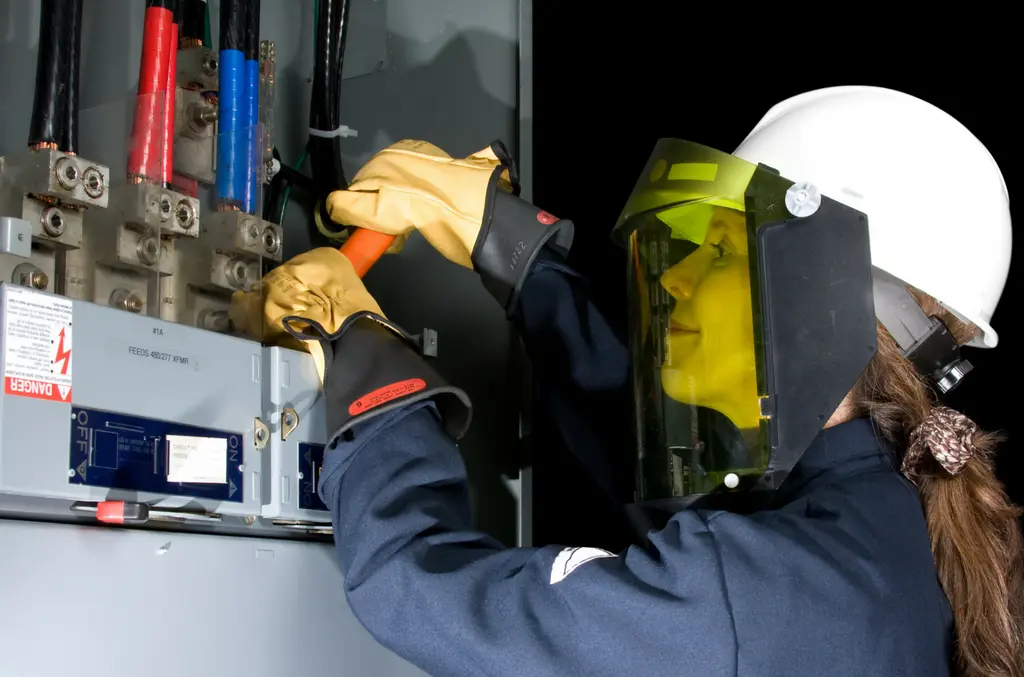Arc flash training is crucial yet frequently overlooked, despite its legal requirement across Canada and the United States. Failing to update electrical shock and arc flash training according to CSA Z462 intervals can expose companies to significant legal risks and safety liabilities. Clearly understanding who needs arc flash training and how often it must be updated ensures compliance, promotes workplace safety, and helps avoid costly legal penalties.
Who Needs Electrical Shock and Arc Flash Training?
The CSA Z462 standard is Canada’s primary guideline for workplace electrical safety, similar to NFPA 70E in the United States. It outlines specific requirements to protect workers from electrical hazards, including electric shock and arc flash.
Under CSA Z462, any worker who may encounter electrical hazards must receive comprehensive training. This includes:
- Electricians
- Electrical technicians
- Maintenance personnel
- Any employees working near energized electrical equipment
Only “qualified” workers are permitted to perform tasks involving electrical equipment. The CSA Z462 standard defines a qualified worker as someone who has received training to recognize electrical hazards, understands equipment construction and operation, and can safely implement required procedures. Tasks such as opening electrical panels or resetting breakers, although routine, must only be performed by qualified personnel with proper training.

How Often Should Training Be Updated?
CSA Z462 mandates that qualified workers update their electrical shock and arc flash training at least every three years. This interval is a clear legal requirement designed to ensure ongoing compliance and up-to-date safety practices.
However, more frequent retraining might be necessary if:
- A worker demonstrates a lack of understanding.
- Job responsibilities or equipment have changed.
- There has been a safety incident or significant update to CSA Z462.
Employers must continuously evaluate training needs rather than strictly waiting for the three-year interval.
Consequences of Non-Compliance
Failure to provide updated training every three years can result in severe consequences under provincial occupational health and safety laws, including:
- Substantial fines
- Jail time (particularly following incidents involving injuries or fatalities)
Both employers and supervisors may face penalties for non-compliance. Ultimately, employers bear the responsibility to ensure electrical safety training is timely, properly delivered, and documented.
How Employers Can Provide Training and Ensure Compliance
Employers can acquire electrical safety training from accredited safety training providers. Courses are offered in various formats to accommodate workplace needs:
- In-person sessions
- Online modules
- Hybrid options
It’s crucial to select a provider who issues official training certificates upon successful completion. These certificates document each worker’s understanding and compliance with electrical safety standards.

Employers must maintain accurate records of all training certificates. Proper documentation is essential during safety audits, inspections, or in the event of workplace incidents.
What Does Arc Flash and Electrical Shock Training Include?
Typical electrical safety training courses cover both theory and practical applications, including:
- Understanding electrical hazards (arc flash and electrical shock)
- Overview of CSA Z462 requirements
- Arc flash boundaries and approach limits
- Energized vs. de-energized work practices
- Selection and use of personal protective equipment (PPE)
- Interpretation of arc flash labels and single-line diagrams
- Safe procedures for testing, troubleshooting, and switching
- Lockout/tagout (LOTO) practices
- Risk assessment techniques
- Emergency response and incident reporting protocols
Training often concludes with a knowledge assessment followed by certification. This certification serves as critical proof of compliance.

Staying Proactive for a Safer Workplace
Keeping arc flash training current is essential for maintaining workplace safety, meeting regulatory compliance, and protecting your employees from serious electrical hazards. Proactive, consistent training efforts reduce risks, enhance workplace preparedness, and demonstrate due diligence, ultimately contributing to a safer and more compliant working environment.

No responses yet